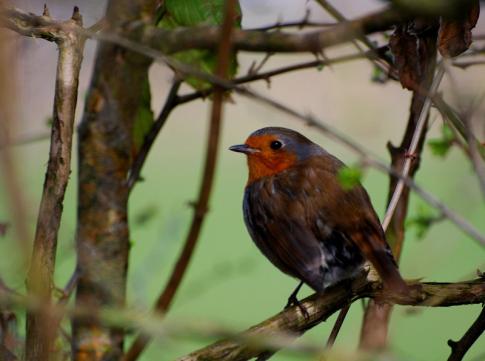Barcelona: birdwatching in plane sight

The reserve has several well designed hides. In one we found parents with excited young children, who could see quite a lot with the naked eye, and men with seriously long lenses. The latter would have been hoping for a close-up of one of the area's less frequent visitors, perhaps the great bittern or Temminck's stint.
By Michael Kerr
Down came the big birds over the reed beds: marsh harrier, grey heron, great cormorant, and then a Boeing in the orange-and-white plumage of easyJet. Only a fraction of what's on the move over Barcelona pays any heed to the directions of air-traffic control; and only a fraction of the migrants passing through on their way south have to fret about passports, visas or security.
I have been to Barcelona three times, but it was not until the most recent trip, a fortnight ago, that I realised that the "Llobregat" that lends its name to the airport of El Prat de Llobregat is a river. It rises in the Pyrenees, enters the Mediterranean just south of Barcelona, and on its way irrigates a sizeable coastal plain. On that plain are several nature reserves, including one of 464 acres on the edge of the airport.
The Espai Natural del Remolar-Filipines is not only a little world of its own; it has smaller worlds within: marsh, pool, pine grove, riverside, even a beach. It's a haven for aquatic birds – and for passengers with time on their hands who fancy a breath of fresh air.
Our visit was shorter than most. We had arrived at the airport before noon on a Saturday with a few hours to kill after a week's birdwatching in the Ebro Delta area in southern Catalonia.
Having driven to the perimeter of the reserve, we found a barrier down but unlocked, so raised it and drove into the car park. There we were told that the car park wasn't open at weekends because it got too congested (there had been no mention of this on the notices outside); we would have to drive out again, park a mile-and-a-quarter beyond the perimeter and walk back. Julian, our guide, who had seen the reserve before, volunteered to drive out and stay with the minibus while the other four of us had a wander around. We would be deprived of his expertise, and his unerring ability to identify a bird as soon as someone had spotted it, but we would at least have an hour or so before flying home.
We had hardly stepped on to the gravel path into the reserve when we were greeted by the explosive, metallic call of a Cetti's warbler, a bird the RSPB describes as "small, rather nondescript" and "difficult to see". So it was for me, though my companions, Mike, Jane and Deirdre, seasoned birders all, managed to separate it from its surroundings.
Through the screens to either side of the path, I had less trouble seeing mallard, gadwall, great crested grebe and dabchick, and what we took for turtles but which Julian told us later were Spanish terrapins.
The reserve has several well designed hides. In one we found parents with excited young children, who could see quite a lot with the naked eye, and men with seriously long lenses. The latter would have been hoping for a close-up of one of the area's less frequent visitors, perhaps the great bittern or Temminck's stint.
Thanks to Jane's left-a-bit, right-a-bit guidance, I got a good view of the serin, a short-billed yellow finch, pecking its way among mudflats with the control tower in the background. It's not a bird I'm likely to see in Britain, where it's recorded only a few times a year.
Back outside, scanning trees from the path, Mike alerted us to the presence of a kestrel and then to a woodpecker behaving in contradiction of the field guides. Unlike its British cousin, they say, the Iberian green woodpecker rarely drums on trees and spends a lot of time on the ground in pursuit of ants. This one, however, was at the top of a tree, its red crown and black-enclosed white eye standing out (once I'd been told where to look for them) against grey bark.
Would we have heard it if it had been drumming? Probably. For there were quiet moments between the take-off and landing of jets; moments that made us forget where we were.
Barcelona basics
For directions to the Remolar-Filipines reserve and details of opening times, see www.deltallobregat.cat.
Michael Kerr travelled in Catalonia with Julian Sykes Wildlife Holidays (0034 962 852 925; juliansykeswildlife.com). It still has places on its next trip, to watch Iberian lynx in Andalusia, departing on December 1.
British Airways (0844 4930758; ba.com/barcelona) offers a seven-night fly-drive to Barcelona from £179 per person sharing for travel between January 1 and May 25, 2012. The price includes return British Airways flight from Heathrow and Avis car hire.




 del.icio.us
del.icio.us Digg
Digg

Post your comment